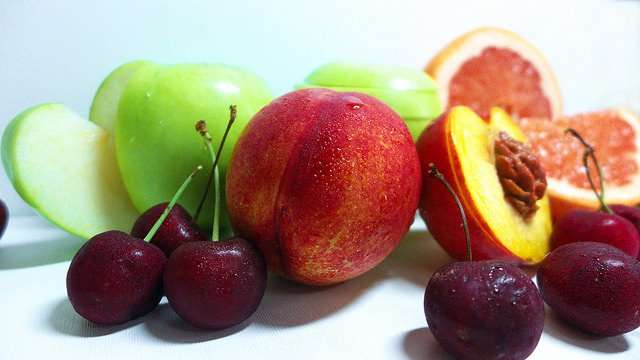Five Fun, Creative Ways To Get Your Veggies In
If you know you need to get more vegetables but struggle to make it happen because it seems to too hard—or boring—try these five easy veggie fixes.

When it comes to measuring time, you know when something is too long; with money you know when it's too expensive.
But when it comes to "good for you" foods, do you know when you've reached the point of too much "goodness"?
Salad dressing for your colorful salad, nuts for a snack, agave in your coffee, and peanut butter for your sandwich are all good foods, but they happen to pack a lot of calories.
In order to ensure that these good-for-you foods don't become not good-for-you, take the extra step to measure them and enjoy just the right amount.
Comfortable High Heels For Women Designed by Orthopedic Nurse
The best way to do this is to use measuring spoons and cups whenever you can. Soon you'll know by eye (and taste!) when you have gotten it just right. A tablespoon measure for your salad dressing or shredded cheese, a quarter cup measure for your nuts, a cup of fruit, a teaspoon of agave, and more.
When available, closely read the nutrition facts panel for all of the foods that you may overeat and be sure to eat the suggested serving size. You may be surprised by how easy it is to add calories and fat to the foods you are eating until salad is no longer a lean choice, nuts are more than just a snack, and the agave isn't a "better" sweetener.
Use this quick guide to help you stay on track:
Shredded Cheese: When cooking with cheese, use a ¼ cup measure to define how much you are using; for a garnish, use a tablespoon to control how much you have.
Maple/Agave Syrup: Serve these sweeteners using a tablespoon and aim to limit at 2 tablespoons.
Fruit: Yup, it is possible to overeat your fruit! Aim for small to medium size whole fruit or about 1 cup of diced fruit per serving.
Potatoes: Potatoes are full of nutrition and a great choice when you know how much to have. Aim for a serving size that is about the size of a computer mouse.
Salad Dressing: Too much salad dressing can turn a low calorie, healthful option into just the opposite. Control how much dressing you use by measuring it with a tablespoon and limiting to that amount for a smaller salad.
Olive Oil: Serve with a teaspoon to have about 5 grams fat/45 calories per serving.
Sliced Nuts: Use a tablespoon to scoop out sliced nuts to control how much you have.
Grains, including whole wheat pasta, brown rice, quinoa and more: Serve wholesome grains with a ½ cup measure to control how many portions you have
Natural Peanut Butter or other nut butter: Use your knife to fill a tablespoon to have about 8 grams fat and around 100 calories (depending on how you are using the nut butter you may be able to double the portion).
With these serving sizes as a guide, you will be able to enjoy a variety of foods without overdoing it. Before long, you won't even need to use the measuring tools!
Photos: DeusXFlorida, travel oriented, Alexi Ueltzen, Brian Child– CC
Allison Stowell is a Registered Dietician at Guiding Stars.
Share A Healthy Portion Of Facts With Your Followers:
Be the first to comment